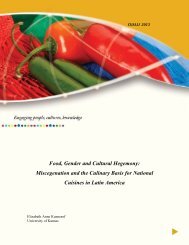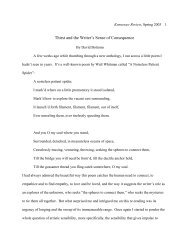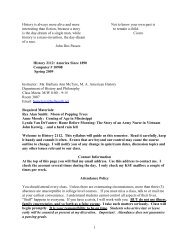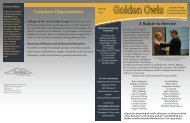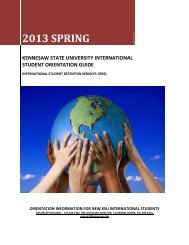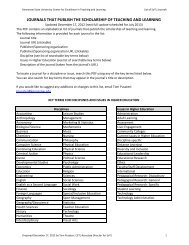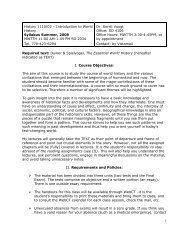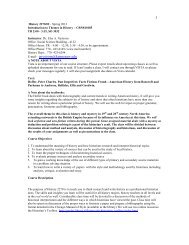Beyond Rosie: Women in World War II - Kennesaw State University
Beyond Rosie: Women in World War II - Kennesaw State University
Beyond Rosie: Women in World War II - Kennesaw State University
Create successful ePaper yourself
Turn your PDF publications into a flip-book with our unique Google optimized e-Paper software.
<strong>Beyond</strong> <strong>Rosie</strong>: <strong>Women</strong> <strong>in</strong> <strong>World</strong> <strong>War</strong> <strong>II</strong><br />
Eight <strong>Women</strong> and the Holocaust<br />
Time Required 1 – 2 Class Periods<br />
PAGE 52<br />
Overview:<br />
<strong>Women</strong> <strong>in</strong> occupied Europe did not experience <strong>World</strong> <strong>War</strong> <strong>II</strong> as Allied women did. They<br />
faced direct, often terrify<strong>in</strong>g confrontations with the physical destruction of war and the<br />
tyranny of fascism.<br />
Jewish and other women <strong>in</strong> the camps and ghettos sometimes found ways to improve,<br />
if even slightly, their <strong>in</strong>human liv<strong>in</strong>g conditions. Through “mutual assistance” groups, <strong>in</strong><br />
which women provided each other with food, care, and cloth<strong>in</strong>g, through camp work <strong>in</strong><br />
laundry or food detail, and even <strong>in</strong> secret resistance groups that shared <strong>in</strong>formation with<br />
the outside world, some women resisted the Nazi plan of total destruction of non-Aryan<br />
peoples.<br />
<strong>Women</strong> were capable of dramatic acts of bravery. Rosa Robota was a member of the Polish<br />
underground movement and cont<strong>in</strong>ued to defy the Nazis even after she was deported to<br />
Auschwitz <strong>in</strong> 1942. In 1944, Robota and other women smuggled gunpowder <strong>in</strong> order to<br />
destroy Crematoria IV <strong>in</strong> the Auschwitz upris<strong>in</strong>g. She was arrested and executed <strong>in</strong> January<br />
1945 after refus<strong>in</strong>g to divulge any <strong>in</strong>formation.<br />
<strong>Women</strong>, <strong>in</strong>clud<strong>in</strong>g those who were Jewish, Roma, physically or mentally disabled, and<br />
political prisoners, were sought out for annihilation as they were not deemed part of the<br />
Nazi-def<strong>in</strong>ed “master race.” Though not targeted because of their gender, women’s experience<br />
of the Holocaust differed from men’s.<br />
One of the camps, Ravensbrück, was built specifically for women, and was located 50 miles<br />
North of Berl<strong>in</strong>. A number of the women imprisoned there were “political prisoners,” resistance<br />
fighters, and those who had tried to help “undesirables” <strong>in</strong> some way and who stood<br />
up aga<strong>in</strong>st Nazi oppression.<br />
Learn<strong>in</strong>g Objectives:<br />
• Understand the <strong>in</strong>volvement and roles of women forced <strong>in</strong>to concentration camps by<br />
the Nazi regime dur<strong>in</strong>g <strong>World</strong> <strong>War</strong> <strong>II</strong>.<br />
• Analyze the life of women who faced gruesome conditions and often death dur<strong>in</strong>g<br />
the Holocaust and understand the complexity and motivations of their struggle and<br />
ultimate fate.<br />
Materials Needed:<br />
Pens/pencils, paper, computer with Internet access, projector<br />
Introduction:<br />
1. Ask the students what roles and <strong>in</strong>volvement they th<strong>in</strong>k women had dur<strong>in</strong>g the Holocaust.<br />
Why were women <strong>in</strong>terned and how did the Holocaust affect them? Write these<br />
answers on the board.



